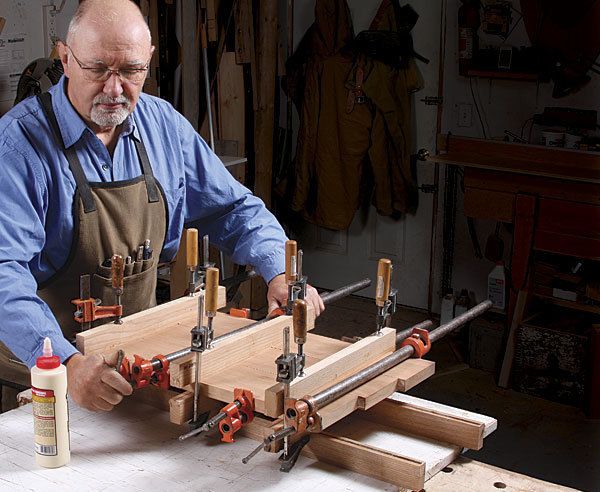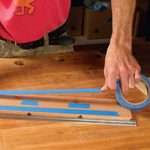User’s Guide to PVA Glue
We’ve sorted through the formulations to help you choose the right yellow glue for any situation
Synopsis: Yellow glue, officially called polyvinyl acetate (PVA), is the most common woodworking glue. It’s easy to understand why. It has a longer shelf life than its predecessor, hide glue, offers more working time, and doesn’t require a heated pot. It will bond all types of joinery, many bent laminations, and most veneered panels. And it’s not picky about wood type. Still, to get the most from this product, you need to understand how it works, the different types available and which jobs they are best suited for, and the best way to use it for successful furniture making.
Woodworking isn’t cheap, but glue isn’t the problem. That’s because our most common adhesive, yellow glue, is inexpensive and works for many tasks. We all know it and love it, but a better understanding of how this glue works, and the wide array of formulations available, will help you get the most from it.
Officially called polyvinyl acetate (PVA), this adhesive came into wide use after world war II. Its predecessor, animal-hide glue, reigned for centuries, going back to the furniture in king Tut’s tomb. PVA came with a number of advantages: longer shelf life, more working time, and no need for a heated pot. Also, PVAs could be formulated for different jobs and characteristics, such as water resistance and working time.
PVA glues will bond all types of joinery, many bent laminations, and most veneered panels. And they work well on almost all woods, including plywood and MdF. But I avoid using PVAs on most tropical woods, which contain oils that will interfere with the glue’s bond.
PVAs prefer fresh surfaces and tight joints
To get the most strength from PVA glue, you need to know how it works. one critical factor is absorption. Suspended in water, the glue particles are absorbed into the surrounding wood fibers. when the moisture dissipates and the glue hardens, the two adjacent pieces of wood are bonded. That’s why joints should be glued right after cutting, sanding, or planing them. If a week or more has passed, surface contaminants can rise from inside the wood and stop the water from penetrating.
The other key to a strong bond is having a very thin, continuous film of glue in the joint. PVA glue is not a good gap-filler. That means good mating surfaces, and powerful clamping force when possible. when you can’t clamp the faces of a joint together directly—as is the case with dovetails and mortise-and-tenon joints, for example—the joinery must be snug to ensure success.
Apply the right amount
It doesn’t really matter what you use to apply PVA glue, as long as you spread it evenly and thinly over the entire surface of the joint.
Photo: Asa Christiana
For the full article, download the PDF below:
Fine Woodworking Recommended Products

Craftsman Random Orbit Sander

Diablo ‘SandNet’ Sanding Discs

3M Blue Tape























Log in or create an account to post a comment.
Sign up Log in